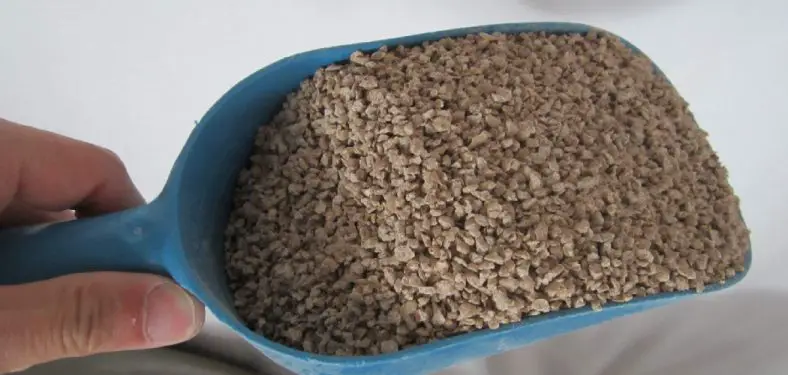There is nothing worse than dealing with a dirty, smelly litter box. But how often do you need to change the litter to keep things fresh? And what kind of litter should you use? Here’s everything you need to know about keeping your kitty’s litter box tidy. And how often to change non clumping litter.
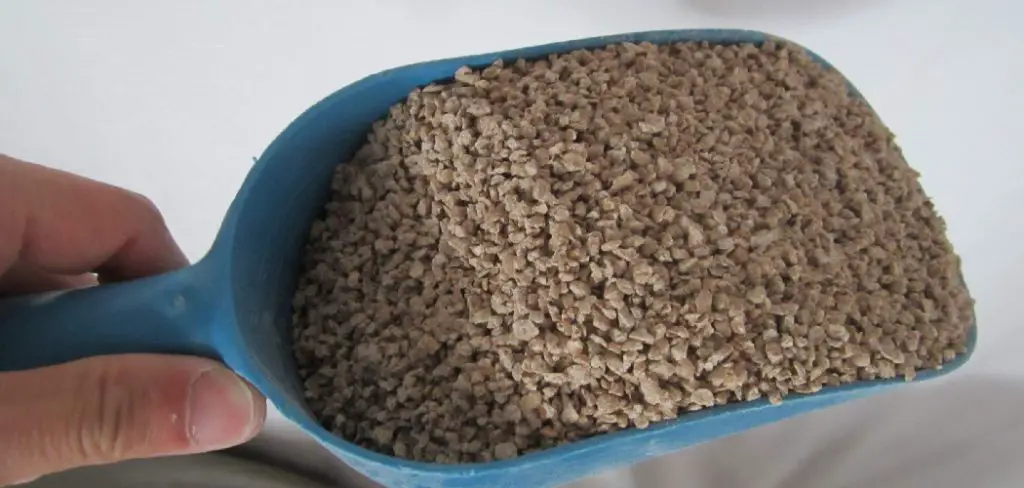
Contents
What Is Non Clumping Litter?
Clumping litter is the most common type of cat litter, but non-clumping litter has its own advantages. Clumping litter forms tight clumps when it comes into contact with moisture, making it easy to scoop out waste. However, non-clumping litter doesn’t form clumps, so it’s not as easy to scoop.
But non-clumping litter has its benefits: it’s usually cheaper than clumping litter and lasts longer since you don’t have to replenish it constantly. In addition, many cats prefer non-clumping litter because it feels more like sand and is easier on their paws.
If you’re looking for an alternative to clumping litter, non-clumping litter is worth considering.
How Often to Change Non Clumping Litter?
Clumping cat litter is a type of cat litter that forms clumps when it comes into contact with moisture. These clumps can then be scooped out of the litter box, leaving fresh, dry litter behind. Non-clumping cat litter, on the other hand, does not form clumps. Instead, it absorbs moisture and odor, creating an ideal environment for your cat.
So, how often to change non clumping litter? The answer depends on a few factors, including the number of cats using the litter box and the size of the litter box. In general, it is best to scoop out solid waste daily and to change the litter every two to three weeks completely.

By following these guidelines, you can help keep your cat’s litter box clean and fresh.
How to Change Dirty Cat Litter Step by Step Guide
Step 1: Scoop out the clumps
Use a cat litter scoop to remove all of the solid waste from the litter box. Be sure to get rid of all the clumps so that the fresh litter can do its job properly.
Step 2: Pour out All of The Dirty Litter Into a Garbage Can
After you have scooped out all of the clumps, it is time to pour out all of the dirty litter into a garbage can. Be sure to do this over a trash can or garbage bag to avoid making a mess. All of the soiled litter should be thrown away and replaced with fresh, clean litter.
Step 3: Clean The Litter Box With Soap and Water
After all the old litter has been removed, it’s time to clean the box with soap and water. Be sure to get all the nooks and crannies, as any leftover urine or feces could contaminate the new litter. Let the box dry completely before moving on to step four.
Step 4: Rinse the Empty Litter Box
You should always rinse out the litter box before adding fresh litter. This will help remove any residual soap or bacteria that may be lingering. Once the box is rinsed, let it dry completely before moving on to step five.
Step 5: Add Fresh Litter
Once your litter box is clean and dry, you can add fresh litter. Be sure to follow the manufacturer’s directions on how much litter to add. Once you have added the appropriate amount of fresh litter, it’s time to let your cat(s) enjoy their clean box!
Step 6: Place It Back
After adding fresh litter, it is time to place the litter box back in its original location. Then, your cat(s) will know where to find it and will be able to use it as usual.
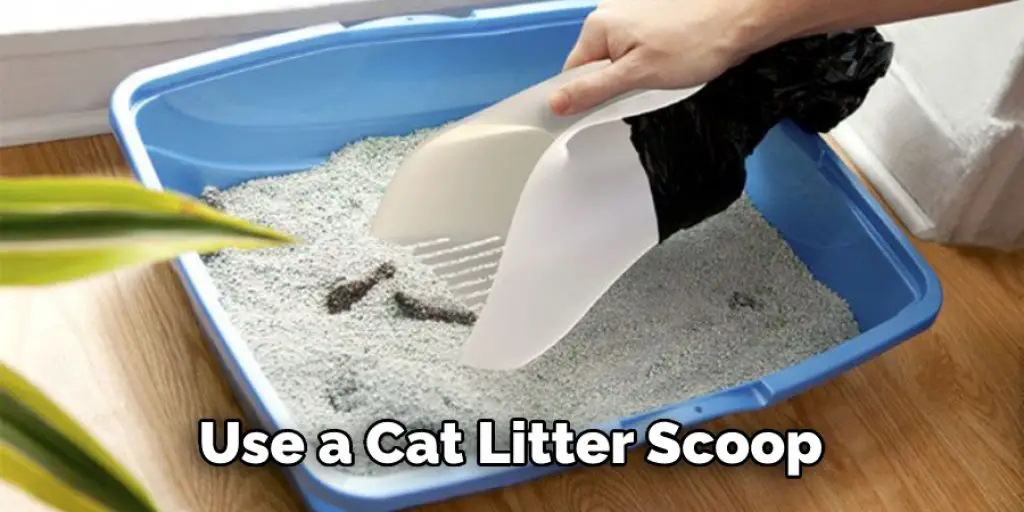
It is important to note that you should not wait too long to change the dirty litter. Doing so can cause bacteria and other contaminants to build up, which can harm your cat(s). You should generally change the litter every two weeks or as needed. Keep an eye on the box and scoop it out whenever it seems necessary.
That’s it! You’ve now learned how to change dirty cat litter. Remember, it is important to do this regularly to keep your cat(s) healthy and happy. Please keep reading for more information about how often to change non clumping litter.
What Are the Benefits of Changing Your Non Clumping Cat Litter Regularly?
One of the benefits of regularly changing your non clumping cat litter is that it helps to control odor. When cats urinate, they release ammonia, which is a strong-smelling gas. Ammonia can build up in used litter, making the box stink. To help keep odor under control, scoop out waste daily and completely change the litter every one to two weeks.
In addition to controlling odor, regular changes also help keep the litter box fresh and clean. This is important because cats are very clean animals and will avoid using a dirty box. Finally, changing the litter regularly can also help to extend the life of your litter box.
Over time, urine and other waste can break down the material, causing it to deteriorate. By changing the litter frequently, you can help to prolong the life of your box.
What Are Some of The Drawbacks of Using Non Clumping Litter?
Non-clumping litter has a few drawbacks. For one, it’s not as effective at absorbing odor as clumping litter. Additionally, non-clumping litter can track more easily, meaning that your cat may end up leaving little piles of litter all over your house. Finally, non-clumping litter is more likely to become wet and matted, making it less effective at absorbing urine and feces.
As a result, you may need to change your cat’s litter more often if you use the non-clumping litter. Despite these drawbacks, however, non-clumping litter does have some advantages. For example, it’s usually cheaper than clumping litter and easier to find in stores.
If you’re on a budget or can’t find clumping litter in your area, non-clumping litter may be a good option for you and your cat.
How Can You Tell if Your Cat’s Non Clumping Litter Is Full
If you have a cat, you know that litter boxes can be a bit of a hassle. Not only do you have to scoop out the waste regularly, but you also need to make sure that the litter is clean and fresh. Clumping litter makes this process a bit easier, as it allows you to remove soiled areas without having to replace the entire contents of the box.
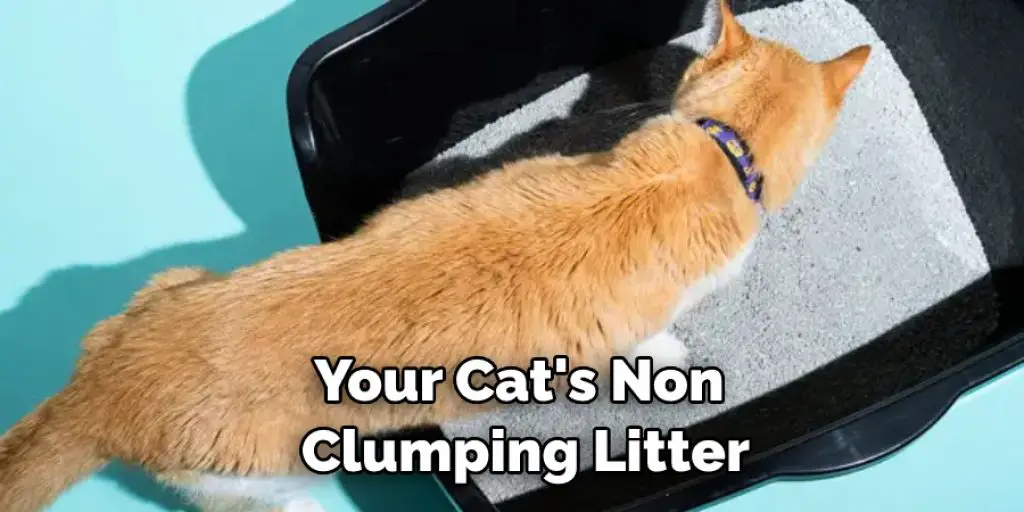
However, non-clumping litter doesn’t offer this same convenience. So, how can you tell when it’s time to change the litter?
There are a few indicators that your cat’s non clumping litter is full. First, you’ll notice that the odor is becoming more pronounced. Second, the texture of the litter will change as it becomes saturated with urine and feces.
Finally, scooping will become more difficult, as the waste will no longer stick to the sides of the box. If you notice any of these changes, then it’s time to dump out the old litter and start fresh.
With a little trial and error, you’ll quickly develop a routine that works for you and your cat.
How to Properly Dispose of Your Old Non Clumping Litter
When it comes time to say goodbye to your old non clumping litter, there are a few things you need to do to ensure that it is disposed of properly. First, you will need to remove all the litter from the litter box.
Next, you will need to find a suitable container for disposal. A garbage can or large plastic bag will work fine. Once the litter is in the container, seal it tightly so that no contents can escape.
Finally, you must take the container to your local landfill or recycling center. With these simple steps, you can rest assured that your old non clumping litter will be disposed of properly.
Frequently Asked Question
Should You Add More Non Clumping Litter if Your Cat’s Box Is Full?
Yes, you should add more non clumping litter if your cat’s box is full. However, keep an eye on how often your cat is using the litter box and how much litter is being used. If the litter box is being used a lot and the level of non clumping litter doesn’t seem to be changing, it might be time to add more.
Can You Use Clumping and Non Clumping Litter Together?
Yes, you can use clumping and non clumping litter together. However, you will need to change the non clumping litter more often, as it cannot absorb liquid as clumping litter does.
Can I Flush My Non Clumping Litter Down the Toilet?
The answer to this question is a little more complicated than a simple yes or no. Some non clumping litters can be flushed down the toilet, while others should not be. If you are unsure whether or not your litter can be flushed, it is best to err on the side of caution and not flush it. Flushing litter down the toilet can clog your pipes and cause serious damage to your home.
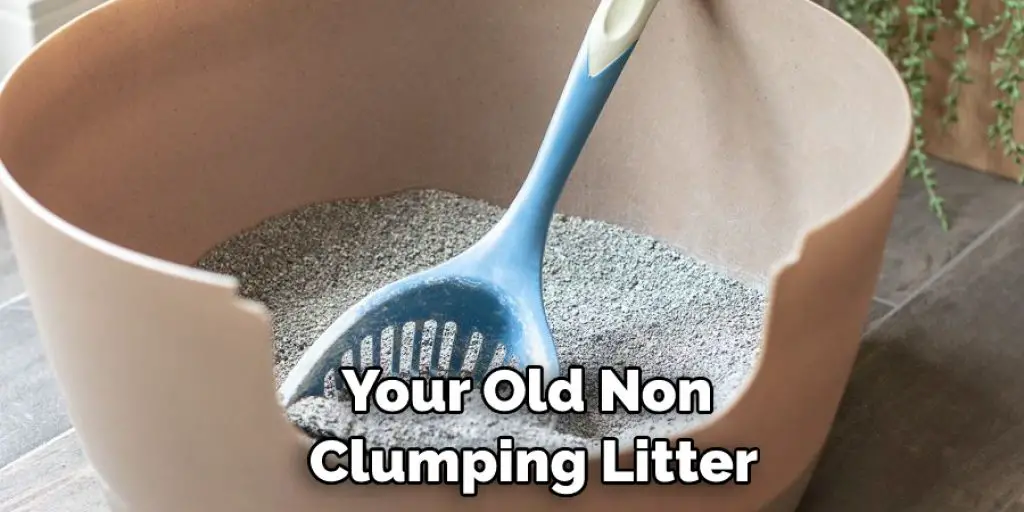
Conclusion
Have you ever thought about how often to change non clumping litter? It may not be as often as you think. This blog post outlines the science behind non clumping litter and how long it can safely be used. We hope this information helps you make the best decision for your cat and home.

